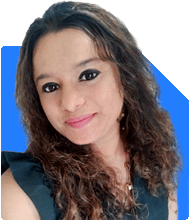Ramalingam Kalirajan |10874 Answers |Ask -Follow
Mutual Funds, Financial Planning Expert - Answered on Jul 10, 2025
He has an MBA in finance from the University of Madras and is a certified financial planner.
He is the director and chief financial planner at Holistic Investment, a Chennai-based firm that offers financial planning and wealth management advice.... more

Hello,am 47,single parent of an 18 year old, having takehome of 2l/month.i have 83l in FD( to buy property),18l in ppf,and ssy,45l in epf and nps,live in my own apt,loan-free and have just started mf(10) and stocks(5l) where I plan to invest from now on. my daughter's education expenses can be taken care of by ssy.i want to have around 5cr in next 5 years.Is that possible with my current salary?
Let us now do a complete 360-degree assessment. This will include your goal, income capacity, current assets, and best way forward. Your target of Rs. 5 crore in 5 years is very aggressive. But we will explore it deeply with a realistic lens.
# Monthly Income and Savings Potential – Good, But Stretch Limited
– Take-home salary: Rs. 2 lakh per month
– No loan or EMI burden
– Own home already
You are in a very comfortable monthly cash flow position. That is rare and commendable. You can save a big portion.
Suggestions:
– Save at least Rs. 1.3 to 1.5 lakh every month.
– Avoid lifestyle inflation.
– Avoid major new expenses for next 5 years.
This savings discipline will be your key wealth multiplier.
# Existing Assets – Useful but Need Careful Alignment
You have accumulated the following:
– Rs. 83 lakh in fixed deposits (for buying property)
– Rs. 18 lakh in PPF and SSY
– Rs. 45 lakh in EPF and NPS
– Rs. 5 lakh in stocks
– Rs. 10,000 SIP started in mutual funds
These assets are impressive in volume. But not all of them are wealth-growing.
Let us analyse each one and suggest what role they should play.
# Fixed Deposits – Safe but Weak in Wealth Building
Your Rs. 83 lakh in FD is earmarked for property.
You haven’t asked if you should buy or not, so we won’t suggest real estate.
Still, you must know:
– FD is not suitable for building large long-term wealth.
– Returns are taxable fully as per your income slab.
– Over 5 years, real returns (post inflation) are low.
If this Rs. 83 lakh is not used for property,
please reallocate it gradually into better assets.
You can shift monthly Rs. 5–7 lakh to suitable mutual funds.
Don’t do full lump sum. Go slow and steady.
# PPF and SSY – Safe and Locked
– PPF: Rs. 18 lakh
– SSY: Linked to daughter’s future
These are tax-free, safe schemes. Continue contributions as per limit.
But note:
– PPF is locked for 15 years. You cannot rely on it for short-term goals.
– SSY is also non-liquid. It is good for your daughter’s marriage.
So these funds are useful, but not flexible. Do not expect help from them in 5 years.
# EPF and NPS – Long-Term Retirement Tools
– EPF + NPS total: Rs. 45 lakh
These are retirement-focused. Not for short-term goals.
Do not disturb these for the Rs. 5 crore plan.
Also:
– NPS has partial liquidity after 3 years
– EPF is liquid only after retirement or special needs
Let these grow separately. These are your security post-age 60.
# Mutual Funds and Stocks – Your Real Growth Engine
You’ve started SIPs of Rs. 10,000 and invested Rs. 5 lakh in stocks.
This is good, but not enough to reach Rs. 5 crore in 5 years.
Here’s why:
– 5 years is a short time
– Equity may not give consistent returns every year
– Stocks are volatile and risky if done without strategy
– SIPs work better over 10–15 years
Still, this is the only path that can potentially create big wealth.
# Your Goal – Is Rs. 5 Crore in 5 Years Feasible?
Let’s now come to the key point.
You want to reach Rs. 5 crore by age 52. You currently have:
– Rs. 83 lakh in FD
– Rs. 5 lakh in stocks
– Rs. 10,000 SIP
– Rs. 2 lakh/month salary
Assume you save Rs. 1.5 lakh/month consistently for 5 years.
Even then, total invested will be Rs. 90 lakh.
To reach Rs. 5 crore, the entire portfolio must grow at a very high rate.
That is highly unrealistic in just 5 years.
Why this goal is aggressive:
– You would need 25–30% annual return consistently
– Markets don’t work that way
– Volatility and risk are too high
– One market fall can delay goal by 2–3 years
So, no, with your income and current assets, Rs. 5 crore in 5 years is not practical.
# A More Practical 5-Year Roadmap
Instead of aiming for Rs. 5 crore, aim for strong growth in assets.
You can try reaching Rs. 2.25 to 2.5 crore in 5 years with focused strategy.
This is possible with smart investing and tight expense control.
Do this:
– Deploy Rs. 1.5 lakh/month in mutual funds through SIP and STP
– Reallocate idle FDs (except emergency funds) slowly into hybrid and flexi-cap funds
– Keep stocks to below 10% of overall wealth
– Avoid property purchase if not essential
With this approach, you will create real, tax-efficient and flexible wealth.
# Mutual Fund Strategy – Structure it Properly
Since mutual funds are your main path, they must be well-structured.
Avoid random or one-time selection.
Ideal approach:
– Tag each fund to a clear goal
– Choose mix of flexi-cap, large & mid, and hybrid equity
– Add conservative hybrid or short-duration debt for risk buffer
– Don’t invest based on star ratings or past returns
– Avoid sectoral or thematic funds
Stick to 5–6 well-selected funds only.
Review every 6 months with a Certified Financial Planner and MFD.
# Avoid Index Funds and Direct Plans – They Limit Your Growth
If you are considering index funds or direct funds, think again.
These look cheap. But cheap is not always best.
Disadvantages of index funds:
– No flexibility in market ups and downs
– No protection in market corrections
– No smart switching during volatility
– Passive return, no chance of outperformance
Disadvantages of direct funds:
– No advice or personalised tracking
– You’ll miss rebalancing opportunities
– No emotional support during market falls
– No goal tracking and strategy corrections
Instead, go with regular plans through MFD and CFP.
You’ll pay a small cost but get high value in return.
# Emergency Planning – Set Aside and Stay Ready
You are a single parent. That means your daughter depends solely on you.
This increases your responsibility.
You must have:
– Rs. 10–12 lakh in emergency funds
– Health insurance of Rs. 25 lakh at least
– Life cover of Rs. 1 crore minimum
– Critical illness and accidental cover if not already taken
Emergency fund must be in liquid or ultra-short funds. Not in equity.
This cushion will give peace in uncertain times.
# Retirement Security – Don’t Forget Long-Term Horizon
Your current retirement corpus is Rs. 45 lakh in EPF and NPS.
If your daughter becomes financially independent in 8–10 years, you will need income only for yourself.
Still, retirement must be well-funded.
Do this:
– Allocate part of your MF portfolio for retirement corpus
– Don’t withdraw equity gains for short-term use
– Let a portion compound beyond 10–15 years
– Delay NPS withdrawal till 60
– PPF can be extended in 5-year blocks for post-retirement use
This strategy will help you remain financially free in old age.
# Stay Away From Investment-cum-Insurance Plans
You have not mentioned LIC, ULIPs or traditional plans.
If you have any such policies:
– Surrender them if they are not giving good return
– Redeploy the maturity amount to suitable MFs
– Insurance and investment should always be separate
Keep insurance pure. Keep investments goal-based.
This is essential for long-term financial health.
# Smart Tax Planning – Use Legal Benefits
Use these tools to lower taxes and increase savings:
– Max out PPF every year (Rs. 1.5 lakh)
– Continue SSY till maturity
– NPS contributions under 80CCD(1B) for extra deduction
– Use HRA, 80D, and Section 10 exemptions wherever applicable
– Use debt mutual funds for long-term parking, but with slab-wise taxation in mind
Remember new capital gains rules:
– Equity MFs: LTCG above Rs. 1.25 lakh taxed at 12.5%
– STCG on equity taxed at 20%
– Debt MFs: All gains taxed as per slab
So mix your portfolio wisely across time frames and categories.
Finally
You are in a strong financial position. You have no debt and multiple assets.
You have started the right habits at the right time.
Your risk is only in over-ambitious targets and under-diversified investments.
You will not reach Rs. 5 crore in 5 years with current structure.
But you can still reach Rs. 2.5 crore with smart investing.
That will put you in a secure place for yourself and your daughter.
Do this with patience, planning, and guidance from a trusted Certified Financial Planner.
Best Regards,
K. Ramalingam, MBA, CFP,
Chief Financial Planner,
www.holisticinvestment.in
https://www.youtube.com/@HolisticInvestment
Best Regards,
K. Ramalingam, MBA, CFP,
Chief Financial Planner,
www.holisticinvestment.in
https://www.youtube.com/@HolisticInvestment
You may like to see similar questions and answers below
Jinal Mehta | Answer |Ask -Follow
Financial Planner - Answered on Jun 24, 2024
Milind Vadjikar | Answer |Ask -Follow
Insurance, Stocks, MF, PF Expert - Answered on Nov 21, 2024
Ramalingam Kalirajan |10874 Answers |Ask -Follow
Mutual Funds, Financial Planning Expert - Answered on Feb 06, 2025
Ramalingam Kalirajan |10874 Answers |Ask -Follow
Mutual Funds, Financial Planning Expert - Answered on Jun 04, 2025
Ramalingam Kalirajan |10874 Answers |Ask -Follow
Mutual Funds, Financial Planning Expert - Answered on Jun 21, 2025
Mayank Chandel |2569 Answers |Ask -Follow
IIT-JEE, NEET-UG, SAT, CLAT, CA, CS Exam Expert - Answered on Dec 08, 2025
Mayank Chandel |2569 Answers |Ask -Follow
IIT-JEE, NEET-UG, SAT, CLAT, CA, CS Exam Expert - Answered on Dec 08, 2025

Mayank Chandel |2569 Answers |Ask -Follow
IIT-JEE, NEET-UG, SAT, CLAT, CA, CS Exam Expert - Answered on Dec 08, 2025
Mayank Chandel |2569 Answers |Ask -Follow
IIT-JEE, NEET-UG, SAT, CLAT, CA, CS Exam Expert - Answered on Dec 08, 2025
Mayank Chandel |2569 Answers |Ask -Follow
IIT-JEE, NEET-UG, SAT, CLAT, CA, CS Exam Expert - Answered on Dec 08, 2025
Anu Krishna |1746 Answers |Ask -Follow
Relationships Expert, Mind Coach - Answered on Dec 08, 2025
Ramalingam Kalirajan |10874 Answers |Ask -Follow
Mutual Funds, Financial Planning Expert - Answered on Dec 08, 2025
Samraat Jadhav |2499 Answers |Ask -Follow
Stock Market Expert - Answered on Dec 08, 2025
Ramalingam Kalirajan |10874 Answers |Ask -Follow
Mutual Funds, Financial Planning Expert - Answered on Dec 08, 2025
Radheshyam Zanwar |6737 Answers |Ask -Follow
MHT-CET, IIT-JEE, NEET-UG Expert - Answered on Dec 08, 2025


























